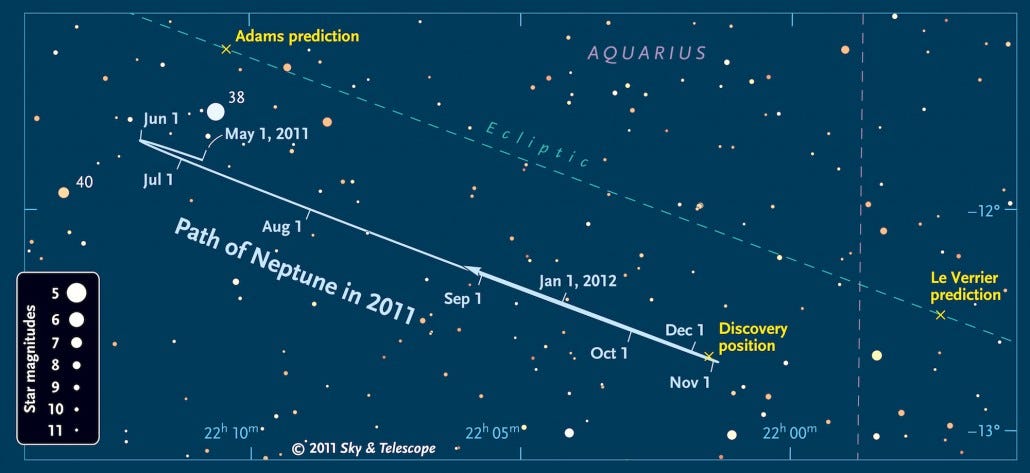Gravity’s Oldest Puzzles
J Thoendell stashed this in Space
Source: https://medium.com/starts-with-a-bang/gr...
The first astrometric anomaly was the deviation of Uranus from its predicted orbit as determined by Newton’s law of gravity. By the mid 1800s, it was clear that the orbit of Uranus didn’t quite agree with Newton, and in particular with Kepler’s second law: that planets should sweep out equal areas in equal times. For a time Uranus moved faster than predicted (sweeping out too much area), and later it moved slower than predicted (sweeping out too little). Thinking that this deviation might be due to the gravitational pull of an undiscovered planet, John Couch Adams and Urbain Le Verrier independently calculated its possible location. This led to the discovery of Neptune in 1846.
In 1859, Le Verrier made a detailed analysis of Mercury’s orbit, and found that it, too, deviated from Newton’s predictions. He proposed the existence of a planet even closer to the Sun, which he called Vulcan. In this case, however, the anomaly was due to Newton’s theory actually being incomplete. In 1915, Albert Einstein showed that Mercury’s anomaly could be explained by his general theory of relativity. Instead of gaining another planet, we gained an entirely new understanding of the universe.
Stashed in: Science!, The Universe, Einstein, Medium
Good explanation of the Pioneer Anomaly:
Launched in the early 1970s, Pioneer 10 and Pioneer 11 were the first probes to travel to the outer solar system. While the probes functioned better than we could have hoped, we began to see something odd in their motion. As expected, the Pioneer spacecraft gradually slowed down as they sped away from the Sun. Most of this was due to the Sun’s gravity, and part was due to the drag of the gases that exist in the solar system. But when all the factors were taken into account, it was found that the Pioneer probes were slowing down a bit faster than expected. This extra deceleration extremely small, but over the course of a year it meant the probes were 400 km off their predicted positions.











5:15 PM Aug 19 2015